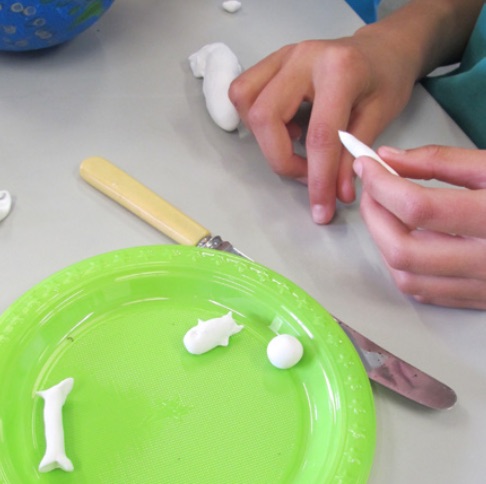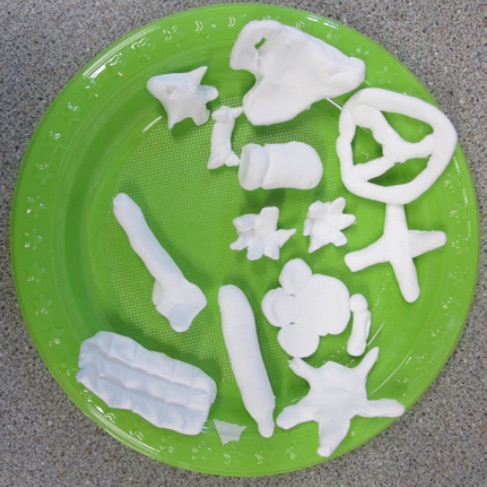

Activity 10
Mini-Sculpture Creation
Students create a group of miniature sculptures representing members of their family. These sculptures will be
included in some way with their final artwork, adding meaning to their piece.
Curriculum
Western Australian Curriculum Content Descriptions
Development of artistic processes and techniques to explore visual conventions through form and texture to create artwork.
Use of techniques and processes and exploration of art forms.

Australian Curriculum Version 8.3 Content Descriptions
Use materials, techniques and processes to explore visual conventions when making artworks (ACAVAM111).
Materials
Air-drying modelling medium (Papermagic used for shared example). Plastic plates to work on, and to store drying artworks.
Masking tape and textas, to apply names to plates.
Tools to assist modelling, such as bamboo skewers, plastic knives, etc.
Activity
Discuss with students the notion that there are many ways to define a family. For the shared project examples, the teacher discussed with students how they could decide who they wanted to include in their family artwork, recognising family members as people who were important in some way to them and that these people didn’t necessarily have to live under the same roof. Some students also included animals, such as pets, as family members.
Explain that today’s goal is to create a group of miniature sculptures to add to their foam ball artwork. Each sculpture could represent or symbolise a member of their family. For example: “Johnny loves fishing so I might make a fish, or fishing rod, or a hook to represent him.”
Introduce the medium to be used and explain/revise modelling clay qualities and techniques.
Demonstrate workspace set-up, modelling techniques, labelling and storing of work.
Students create a group of mini-sculptures that represent or symbolise members of their family. When completed, the mini-sculptures will need to be left to dry on a named plastic plate.
Time
For this documented project, Year 4 students required one 50-minute lesson.
© This lesson plan has been created by Ana Nail and Japingka Gallery. Educational study use encouraged.
Overview | Lesson 1 | Lesson 2 | Lesson 3 | Lesson 4 | Lesson 5 | Lesson 6 | Lesson 7 | Lesson 8 | Lesson 9 | Lesson 10 | Lesson 11 | Lesson 12 | Lesson 13
